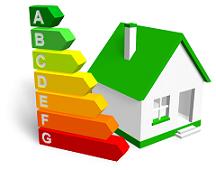Six steps to ensure a reliable Energy Efficiency Report (DPE in French).
Nathalie Kosciusko-Morizet and Benoist Apparu, Secretary of State in charge of Housing, presented 6 six steps to improve the energy efficiency rating. For the government, this is the way to silence criticism of the DPE.
Introduced in 2006, its display is now compulsory on all property advertisements effective from the 1st of January 2011. The energy efficiency report is playing a more and more important role in deciding which French property to buy or rent . It also plays a major role when looking for financial help, such as the zero percent interest rate loan. “80% of households now consider energy consumption rates as a very important criteria in the buying and selling process and 60% say that if they were to sell their apartment, they would definitely plan to do works to improve the energy rating before putting their property on the market”, emphasizes Nathalie Kosciusko-Morizet.
Earlier in the year, a survey illustrated the differences in the DPE results according to different diagnosticians. For example, “For four houses visited by 16 diagnosticians, two houses were classified in three different energy groups, one had been put in two different labels, only one having been given the same energy label by all the professionals”.
The new measures aim to make the energy label an unquestionable reference tool. The plan focuses on six points which involve greater openness, improved calculation methods, better diagnosticians’ training and more effective assessments in the profession.
A breakdown of the 6 steps
An increasing openness
The diagnostician shall explain the figures to the home owner through a detailed statement. The giving of an official document will limit the risk of a non-conform DPE.
Improvement of the calculation method
The number of ratings to be analysed will be raised in order to create a more precise calculation of the energy performance. Originally developed to include thirty criteria the, DPE will now have sixty. “As well as such information as the centralized regulation of the heating system, or the air slats for the double glazed windows, the surface of the building, new criteria will be taken into consideration such as hybrid ventilation, high-performance wood burning stoves, electric boilers etc.”, adds Benoist Apparu.
Using software approved by the Government.
This means limiting the list of software approved for generating DPE’s to software submitted to an evaluation process conducted by the government and the environment agency (Ademe) between 2008 and 2010 ). To date, eleven softwares have been already approved.
A DPE database will be put on line
Ademe is preparing an application to house all DPE’s. This will provide useful statistics to put together national and local strategies concerning energy efficiency in building.
A rise in competence in diagnosticians
Until today, there was only one exam. Now, two levels of exam will be introduced, to distinguish between the skills needed to conduct a DPE in houses and apartments, and the skills required for all types of properties (including tertiary buildings) The theory exams will be increased, as will preliminary training before obtaining the certificate. Continuous training is also planned.
A diagnostician’s directory
In order to better monitor professionals, the government has recently launched an on line diagnostician’s directory which means being able to verify that a diagnostician is fully qualified as well as having access to their contact details.
These measures will be in effect from the 1st of January 2012.


